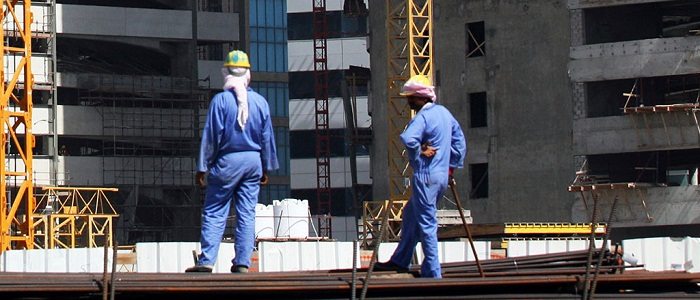Construction work is always regarded as the most dangerous work in African due to regular accidents that do occur on the sites.
The accidents normally occur from the Heights, large and mobile equipment, edges, deep holes, and wobbling stairs. Most of them are as a result of laxity among contractors and workers. We look at five construction safety measures every construction worker must take.
Double-Check Your Work Areas
Ensure you double check some of the key areas of your workplace.
For example if you are working on the common accident causers scaffolding you must ensure your safety first. Check with your supervisor or find out yourself whether the scaffold has been inspected by a professional or a competent person. Never work on an incomplete scaffold which does not have a strong platform or base.
Ladders and custom ladders are other essential construction site tools with a high potential for danger. Check the ladder thoroughly before using it.
Be Vigilant with Electricity and Equipment
Many of the projects that are being carried in the African industry involves lot of electrical installations and more especially Lifting equipment mostly involves electricity and weights. When working with such equipment, you need to be extra cautious to see there is no wear and tear in the machine and also to follow the safety precautions listed for the equipment.
If you do not know them, seek help and instructions from a site supervisor or co-worker who has worked with the equipment before.
If you are using plugged-in portable devices, such as grinders or drills, you should always check that the cables are protected, the metal casing is grounded, and the power supply is provided with an earth leakage circuit breaker. Never allow the electrical tools to come in contact with water.
Never stand or work immediately below a heavy suspended load. And always check that you are not exceeding the permissible levels of load.
You’ll need proper training before operating some equipment, including a material hoist and a crane. Ensure the hoist is operated only after the gates are locked properly. Know the working load limits of a hoist and never exceed those limits. Most importantly, when using material hoists, make sure the communication between you and the operator are clearly understood. Any error here can cause a major accident on the site.
Maintain Fencing
Notice the number of fatal injuries and falls that happen in areas where there is no fencing. Dangerous areas that you see without fencing or with broken and damaged fencing should be avoided until they are completely repaired or a proper fencing is in place. If this is not happening in time, inform your site supervisor immediately.
With the machinery that is present, along with combustible chemicals and welding operations, there is always a possibility of fire on a construction site. Be alert and take some measures to prevent them. Open flames should be kept away from construction sites because of the presence of flammable materials (especially on oil rig sites).
Protective Apparel and PPE
Employers are supposed to provide their workers with proper protective gear and clothing. If you as a worker do not have them, demand them from your employer and wear them correctly. Well-fitted helmets and protective eye wear are a must.
Ear plugs or muffs for working in noisy areas and protective gloves when dealing with toxic chemicals should be worn. Anti-slip footwear and protective apparel are necessary for those working in toxic or dusty environments. Make sure you wear them. Fall harnesses are very important for every construction worker. Ensure your harness is sturdy and secured to a strong anchorage point when you are working at heights.
At sites where there is a lot of movement of heavy vehicles, workers should wear highly visible clothing so that they can be located and seen easily. Because construction workers have to be working outdoors regardless of weather conditions, they also should have some climate protective gear and clothing.
Keep First Aid Close
While it may not be possible for workers to carry first aid supplies with them all the time, both the site supervisor and contractor should ensure that first aid is always accessible to the workers. If as a worker you find that first aid you will need is not around, inform your supervisor immediately. Basic first aid for minor burns, cuts, and falls should be available on site so that the required medical assistance can be provided to the workers immediately.
This is beneficial to the employer, as well, because this ensures that after resting for some time, the worker can return to his work as soon as possible. Some injuries when treated immediately helps in limiting the damage immensely and prevents infections from spreading.


